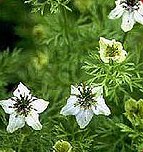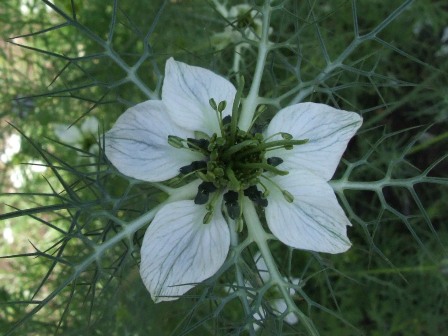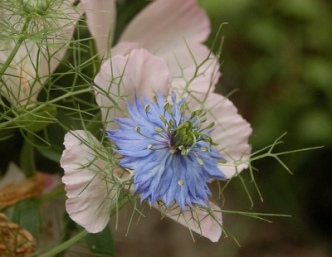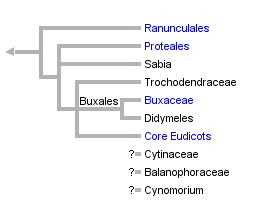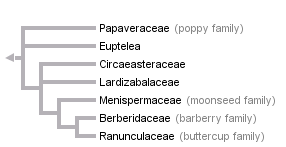Scientific Classification
Domain Eukarya
Kingdom Plantae (Plants)
Subkingdom Tracheobionta (Vascular plants)
Superdivision Spermatophyta (Seed plants)
Phylum Magnoliophyta (Flowering plants)
Class Magnoliopsida (Dicotyledons)
Subclass Magnoliidae
Order Ranunculales
Family Ranunculaceae (Buttercup family)
Genus Nigella
Species N. sativa
To learn about relatives of Nigella sativa; from the same class, click here.
Common names:
Black cumin, Fennel Flower, Roman Coriander, Nutmeg Flower, Black seed, Black Caraway, Damascena, Devil in-the-bush, Wild Onion Seed.
Names in other languages:
Arabic: حبة البركة, حبة
السوداء
French: cheveux de Venus, nigell, poivrette
German: Scharzkummel (black caraway)
Italian: nigella
Spanish: neguilla
Indian: kala zeera (lit, ‘black cumin’), kalonji,
krishnajiraka
Meaning of the scientific name:
Nigella – Blackish; the seed coat is blackish in color.
sativa – planted, cultivated, sown, not wild.
Photo taken by Sheri Copans.
Description of the flower:
Nigella sativa has a stiff erect branching stem. The leaves are grayish-green in color, and the flower has a pale grayish blue or grayish white color. The leaves are delicate and threadlike and the petals (five petals) are about 2.5 cm wide (1 inch). The flower grows about 16-24 inches in height.
Phylogeny
Angiosperms are considered to be the largest group in the plant kingdom! They are distinguished from all other groups; mainly mosses, ferns, conifers (gymnosperms) and flowering plants (angiosperms), by a set of characteristics that include: roots, stems, leaves, flowers and seeds.
Most of the angiosperms are eudictos (approximatly 75%). This is largely based on molecular data which is supported by a single morphological synapomorphy-triaperturate pollen. Although not all eudicots have this pollen (because of evolutionary changes in pollen structure), triaperturate pollen is used to differentiate eudicots from monocots (for example corn and aloe vera) and all other seed plants. The phylogenetic tree below shows the major groups of seed plants.
Looking at the angiosperms a little bit closer...
Looking at the eudicots a little bit closer...
Under the eudicots falls a bunch of groups called Orders; Ranunculales, Proteales, Sabia, Trochodendraceae, Buxaceae, Didymeles, and Core Eudicots. Nigella sativa is under the order of Ranunculales.
Looking at the Ranunculales a little bit closer...
Under the order of the Ranunculales falls seven major families; Papaveraceae, Euptelea, Circaeasteraceae, Lardizabalaceae, Menispermaceae, Berberidaceae, and Ranunculaceae. Nigella sativa falls under the Ranunculaceae family.
Go back to Home page


